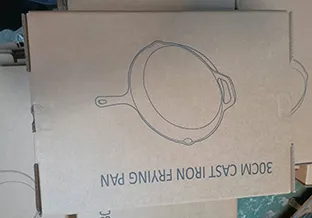
pizza oven skillet
The Art of Cooking Pizza in a Skillet A Cozy Alternative to the Oven
Pizza is one of the most beloved dishes around the world, cherished for its versatility and comforting flavors. While traditional pizza ovens are often deemed the best method to achieve that perfect crust and melted cheese, many might overlook the humble skillet as an effective alternative. Cooking pizza in a skillet can yield delicious results with a unique character, making it a fantastic option for pizza enthusiasts seeking convenience without compromising taste.
The Skillet An Unexpected Hero
A skillet, or frying pan, is a staple in most kitchens. Typically associated with frying, sautéing, and searing, it may come as a surprise to discover its potential for crafting mouth-watering pizzas. Cooking pizza in a skillet offers a variety of advantages
1. Easy Access Most homes have a skillet, making it an accessible tool for pizza creation. No need for specialized equipment. 2. Temperature Control Skillets can provide excellent heat retention and distribution, crucial for achieving that coveted crispy crust. 3. Size Flexibility Skillets come in various sizes, allowing you to customize the size of your pizza. Whether you’re cooking for one or a family of four, there’s a skillet for every occasion. 4. Faster Cooking Time Compared to traditional pizza ovens, skillets can significantly reduce cooking time, perfect for busy weeknights.
The Basics of Skillet Pizza
Cooking pizza in a skillet is about more than just slapping dough and toppings into the pan
. Here’s a straightforward method to get started1. Choose Your Dough You can either make your own dough or opt for store-bought. If you’re short on time, pre-made dough is a fantastic alternative that doesn’t skimp on taste.
2. Preheat Your Skillet Begin by preheating your skillet over medium heat. A cast-iron skillet works best due to its excellent heat retention. Allow it to warm up for a few minutes; this step is vital to achieving a crispy crust.
pizza oven skillet

3. Stretch Your Dough Once the skillet is hot, stretch or roll out your dough to fit the size of your skillet. Keep it thicker around the edges for a delightful crust.
4. Cook the Crust Lightly oil the skillet and place the dough inside. Cook for about 3–5 minutes until the bottom is golden brown.
5. Add Toppings Remove the skillet from the heat and add your favorite sauce, cheese, and toppings. The beauty of pizza is in its versatility. You can go classic with tomato sauce, mozzarella, and pepperoni, or get creative with ingredients like pesto, goat cheese, arugula, and sun-dried tomatoes.
6. Finish on the Stove or Broil You can either cover the skillet with a lid and let it cook on low heat to melt the cheese (about 5–10 minutes) or transfer it to a broiler for a few minutes if you want a bubbling top.
7. Serve Once the cheese is melted and the crust is golden brown, remove the skillet from heat. Let it cool for a minute, then slice and serve. Enjoy your homemade pizza right from the skillet!
Experimentation and Variations
The beauty of skillet pizza is the room for experimentation. You can play with different types of crusts, sauces, cheeses, and toppings. Consider trying a cauliflower crust for a gluten-free option or a deep-dish style using a deeper skillet. Collaboration with seasonal ingredients can further elevate the dish; think fresh basil in summer or hearty roasted vegetables in fall.
Conclusion
Cooking pizza in a skillet is an exciting and accessible way to create homemade pizza in a matter of minutes. It’s practical for those who may not have a pizza oven or for those who want to whip up a quick meal without elaborate preparations. So next time you have a pizza craving, grab your skillet and get creative! The results might just surprise you with their deliciousness. Enjoy the comforting essence of pizza made from the heart and the convenience of the skillet.
-
Season Cast Iron Perfectly with GPT-4 Turbo TipsNewsAug.01,2025
-
High Quality Cast Iron Cookware - Baixiang County Zhongda MachineryNewsAug.01,2025
-
Premium Cast Iron Pan: Durable & Perfect HeatNewsAug.01,2025
-
High Quality Kitchen Durable Black Round Cast Iron Cookware Pancake Crepe Pan-Baixiang County Zhongda Machinery Manufacturing Co., Ltd.NewsAug.01,2025
-
Cast Iron Cookware - Baixiang County Zhongda Machinery | Nonstick, Heat ResistanceNewsAug.01,2025
-
High Quality Kitchen Durable Black Round Cast Iron Cookware - Baixiang County Zhongda Machinery | Non-Stick, Heat Retention, DurableNewsJul.31,2025


